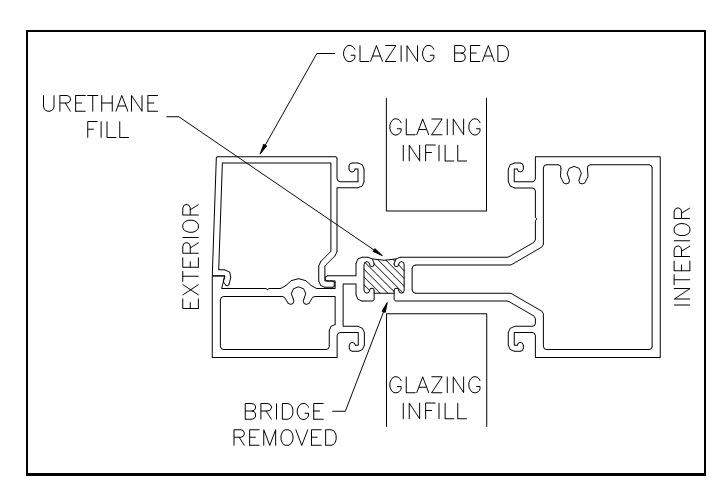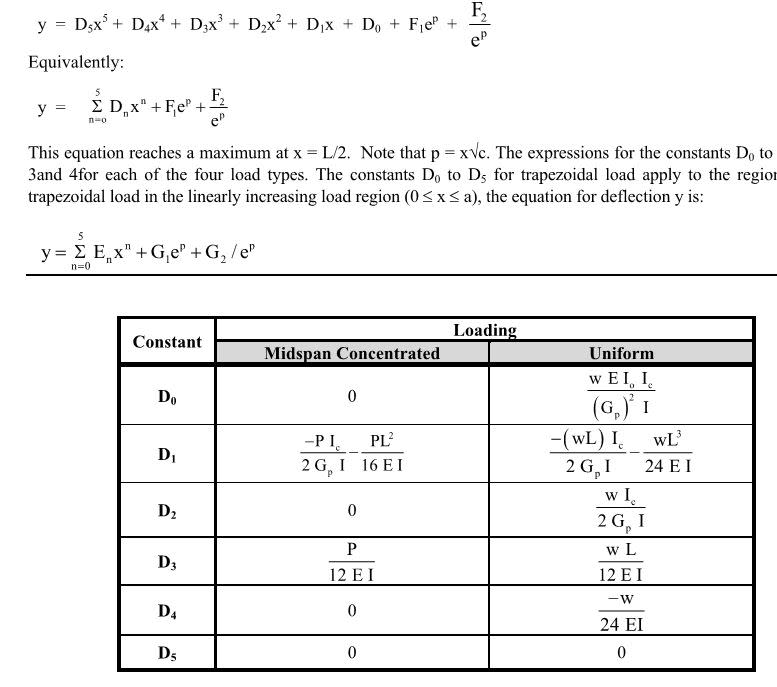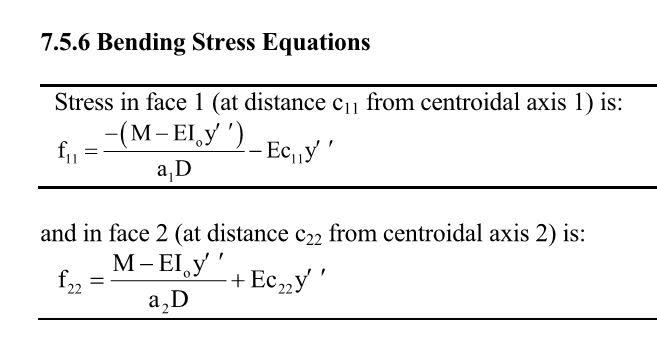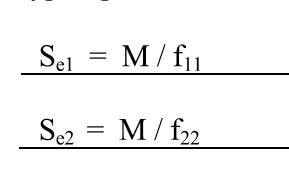I need a sanity check on this in the worst way. Don't worry if you don't know your way around composite split mullion design. Apparently that makes two (or more) of us.
I've got a system similar to the one shown below and my task is to work out its capacity. You know, like Kawneer wind load charts. How hard can that be? Pretty hard it seems. Two pieces of aluminum and some shear soft crud in the middle.
I've worked my way through the AAMA TIR A8 guide which is the standard for this kind of thing. And I've made a functioning spreadsheet of it which checks out with the example problems. So far so good. However, now I need to generate data. Span + spacing = wind pressure capacity. When I get into this though, it turns out that the load carrying capacity is a function of the load itself. It seems to be recursive in a way that isn't much fun to deal with for my particular problem. At first I thought that I'd made an error but, when you look at how the effective section moduli are calculated below, I think that it checks out. There's an S_eff dependency on M which doesn't cancel out. I think.
Does this make sense? Interestingly, I_eff does not seem to depend on load. It does cancel out. And no, sandwich thing mechanics is not my particular forte.




I like to debate structural engineering theory -- a lot. If I challenge you on something, know that I'm doing so because I respect your opinion enough to either change it or adopt it.
I've got a system similar to the one shown below and my task is to work out its capacity. You know, like Kawneer wind load charts. How hard can that be? Pretty hard it seems. Two pieces of aluminum and some shear soft crud in the middle.
I've worked my way through the AAMA TIR A8 guide which is the standard for this kind of thing. And I've made a functioning spreadsheet of it which checks out with the example problems. So far so good. However, now I need to generate data. Span + spacing = wind pressure capacity. When I get into this though, it turns out that the load carrying capacity is a function of the load itself. It seems to be recursive in a way that isn't much fun to deal with for my particular problem. At first I thought that I'd made an error but, when you look at how the effective section moduli are calculated below, I think that it checks out. There's an S_eff dependency on M which doesn't cancel out. I think.
Does this make sense? Interestingly, I_eff does not seem to depend on load. It does cancel out. And no, sandwich thing mechanics is not my particular forte.




I like to debate structural engineering theory -- a lot. If I challenge you on something, know that I'm doing so because I respect your opinion enough to either change it or adopt it.
